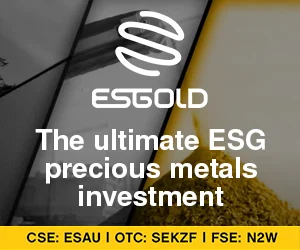Platinum has recently surged to approximately $1,427 per ounce, marking its highest price since early September. This increase is primarily attributed to a persistent supply gap, driven by weak mine output and stagnant recycling rates. As the market grapples with these challenges, understanding the factors influencing platinum’s price and demand becomes crucial for investors and industry stakeholders alike.
Supply Challenges: A Declining Output
The World Platinum Investment Council (WPIC) has projected a 6% decline in South Africa’s mine supply for this year. South Africa is a significant player in the global platinum market, accounting for a substantial portion of the world’s supply. The anticipated drop in production is concerning, as it exacerbates the existing supply gap.
Moreover, while recycled platinum supply is showing modest improvements, it remains at historically low levels. Recycling is a vital component of the platinum supply chain, as it helps to mitigate the impact of declining mine output. However, the current state of recycling efforts has not been sufficient to offset the losses from primary production. Overall, WPIC forecasts that total platinum supply will decrease by 3%, reaching 7.03 million ounces in 2025.
Future Production Concerns
Craig Miller, CEO of Valterra Platinum, has issued a stark warning regarding the future of platinum production. He cautioned that global primary production of platinum group metals could plummet by as much as 20% by the end of the decade. This potential decline raises significant concerns about the sustainability of supply in the long term, especially as demand dynamics continue to evolve.
Demand Dynamics: A Mixed Picture
On the demand side, the landscape is somewhat mixed. Industrial use of platinum has softened, primarily due to slower automotive production and weaker industrial activity. The automotive sector, which has historically been a major consumer of platinum for catalytic converters, is facing challenges that have led to reduced demand.
However, investment demand for platinum has surged, driven by various factors including its trading at a discount to gold. This price disparity has attracted investors looking for value in precious metals. Additionally, uncertainties in global trade have further bolstered investor appetite for platinum, as it is perceived as a safe haven during turbulent economic times.
Jewelry Demand: A Bright Spot
Despite the challenges in industrial demand, the jewelry sector presents a more optimistic outlook. WPIC projects that jewelry demand for platinum will rise by 11% this year, reaching 2.23 million ounces. This growth is largely supported by a rebound in China’s jewelry sector, which has shown signs of recovery as consumer confidence improves. The increasing popularity of platinum in fine jewelry is helping to offset some of the declines seen in industrial applications.
Conclusion: Navigating the Future of Platinum
As platinum prices rise amid a backdrop of supply constraints and shifting demand dynamics, the market faces a complex landscape. While the decline in mine output and stagnant recycling rates pose significant challenges, the surge in investment demand and a rebound in jewelry consumption offer glimmers of hope.
Stakeholders in the platinum market must remain vigilant, adapting to the evolving conditions that influence both supply and demand. As we look toward the future, the interplay between these factors will be critical in shaping the trajectory of platinum prices and the overall health of the market. Investors and industry players alike should keep a close eye on these developments, as they could have far-reaching implications for the precious metals landscape in the years to come.




